Understanding Down Syndrome Through Data and Intervention
Down Syndrome, a genetic condition caused by an extra chromosome 21, profoundly impacts developmental and physical milestones. This article delves into diagnosis rates, developmental challenges, intervention strategies, and research findings, supported by comprehensive data and clinical insights. We explore how early diagnosis and intervention enhance developmental outcomes and the types of support available to individuals and their families. By focusing on evidence-based approaches, this narrative aims to shed light on improving quality of life and foster a deeper understanding of Down Syndrome within medical, educational, and social frameworks.
Prevalence and Diagnosis Rates of Down Syndrome
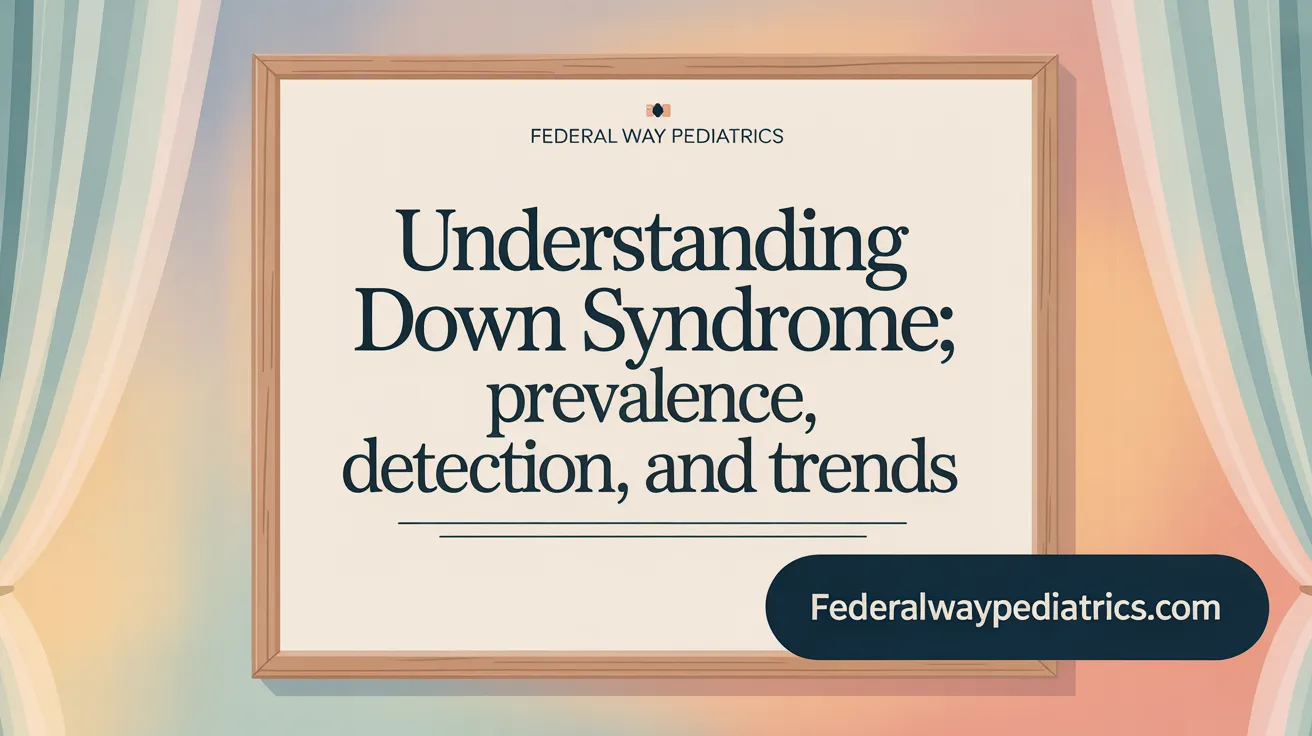
What is Down Syndrome, and what are the current diagnosis rates and prevalence statistics?
Down syndrome is a genetic condition characterized by the presence of an extra copy of chromosome 21, known as trisomy 21. This genetic variation results in physical features and developmental delays, affecting intellectual, communication, and academic skills across all age groups.
The disorder is the most common chromosomal cause of intellectual disability worldwide. In the United States, it occurs in about 1 in every 700 live births. Recent data shows that approximately 1 in 775 babies are born with Down syndrome each year, translating to roughly 5,000 new cases annually.
Prevalence rates are influenced by factors such as maternal age, with the likelihood of giving birth to a child with Down syndrome increasing significantly with maternal age. For instance, women over 35 have a higher risk, with about 1 in 400 births affected, compared to about 1 in 1000 for women under 30.
The total population of individuals with Down syndrome in the U.S. was estimated at over 220,000 in 2018, a number that continues to grow due to increased life expectancy and improved medical care. Historically, life expectancy for people with the condition has increased dramatically—from around 10 years in 1960 to over 50 years today, with many living into their 60s, 70s, and beyond.
Prenatal Screening and Diagnosis
Advances in prenatal screening methods have greatly improved detection rates for Down syndrome. The most accurate screening test, cell-free DNA (cfDNA) screening, has a detection rate of approximately 99.7%, with a very low false-positive rate of 0.04% in singleton pregnancies.
Other screening options include the first-trimester combined screening, which detects about 82-87% of cases, and the second-trimester quad screen, with detection rates around 80%. More comprehensive integration of test results, called integrated screening, offers detection rates as high as 95%.
Diagnostic procedures such as chorionic villus sampling (CVS) and amniocentesis confirm the diagnosis by analyzing chromosomes directly. These tests are typically offered to expectant parents based on screening results or advanced maternal age.
Population Estimates and Trends
The number of individuals with Down syndrome is increasing, largely due to advances in healthcare and social inclusion. Today, they represent a significant portion of the population living with intellectual disabilities.
The trend toward earlier and more accurate detection allows families to make informed decisions and prepare for the support their child will need. Consequently, the medical and educational support systems are evolving to accommodate these individuals, fostering improved quality of life.
| Aspect | Detail | Additional Information |
|---|---|---|
| Prevalence | Approximately 1 in 700 live births | About 5,000 babies per year in the U.S. |
| Detection Rate | Up to 99.7% with cfDNA screening | Very low false-positive rate of 0.04% |
| Maternal Age Impact | Higher risk over age 35 | 1 in 400 for women >35, 1 in 1000 for women <30 |
| Population in U.S. | Over 220,000 in 2018 | Increasing due to healthcare improvements |
| Life Expectancy | From roughly 10 years (1960) to over 50 years | Many individuals living into their 60s and beyond |
Understanding the genetic basis and improving detection methods continues to shape the landscape of Down syndrome diagnosis and prevalence, offering hope for better support and outcomes.
Genetic Variants and Recurrence Risks in Down Syndrome

What is Down Syndrome, and what are the current diagnosis rates and prevalence statistics?
Down syndrome is a genetic condition caused by an extra copy of chromosome 21, known as trisomy 21. It is the most common chromosomal disorder and leads to intellectual disability and developmental delays. The estimated occurrence is about 1 in 700 live births, making it a significant public health concern.
Advances in screening and diagnostic methods have improved detection rates. The non-invasive cell-free DNA (cfDNA) screening test has a high detection accuracy of approximately 99.7%, with a very low false-positive rate around 0.04%. Traditional screening methods, including first-trimester combined screening, second-trimester quad screen, and integrated screening, have detection rates of about 82–87%, 80%, and 95%, respectively.
What is the prevalence of various genetic causes including sporadic cases, translocations, and mosaicism?
Most cases of Down syndrome, about 96%, are due to sporadic nonfamilial trisomy 21. This form involves three copies of chromosome 21 resulting from nondisjunction during egg or sperm formation, leading to a full extra chromosome.
A smaller proportion, roughly 3-4%, involves unbalanced translocations. These occur when part of chromosome 21 attaches to another chromosome (usually chromosome 14 or 21 itself), disrupting the normal chromosomal structure. Such translocation cases can sometimes be inherited if a parent is a balanced translocation carrier.
Mosaicism, which accounts for approximately 1-2% of cases, involves a mixture of cells: some with the typical two copies of chromosome 21 and others with three. This genetic variability can lead to a milder presentation of symptoms and developmental challenges.
How does mosaicism contribute to clinical variability?
Mosaicism occurs when there is a post-zygotic error, resulting in two or more cell lines within the same individual. Depending on the proportion and distribution of trisomic cells, people with mosaic Down syndrome may experience milder intellectual and physical features. This variability can influence medical risks, developmental progress, and the extent of associated health issues.
What is the likelihood of recurrence for families, and what factors influence this risk?
Recurrence risk varies greatly depending on the underlying chromosomal anomaly. For cases caused by nondisjunction (typical trisomy 21), the chance of recurrence in future pregnancies generally remains low, often cited as around 1%. However, if a parent carries a balanced translocation involving chromosome 21, the likelihood of recurrence can be significantly higher, up to 100% in some situations.
Genetic counseling and chromosomal testing are essential for families affected by Down syndrome to understand their specific risks and options for future pregnancies. This personalized information helps families make informed reproductive choices and plan appropriate prenatal testing.
Medical and Diagnostic Protocols for Down Syndrome Detection

What medical and diagnostic protocols are used for Down Syndrome detection?
Detecting Down syndrome involves a combination of screening tests and confirmatory diagnostic procedures. Prenatal screening is the first step, aiming to assess the likelihood of the condition in the fetus.
The most common screening methods include the first-trimester combined screening, which combines blood tests measuring hormone and protein levels with an ultrasound measurement called nuchal translucency. This screening has an approximate detection rate of 82-87%. In the second trimester, the quad screen measures four substances in the mother’s blood, with an overall detection rate around 80%. More comprehensive is the integrated screening, which combines the first and second trimester tests for an overall detection rate close to 95%.
Cell-free DNA (cfDNA) screening, a newer technology, analyzes small fragments of fetal DNA circulating in the mother's blood. This method offers a detection rate of about 99.7% and a very low false-positive rate of 0.04% in singleton pregnancies, making it a highly reliable non-invasive option.
If screening indicates a high risk, diagnostic tests are recommended to confirm the diagnosis. These invasive procedures include chorionic villus sampling (CVS) and amniocentesis. CVS, performed between 10 and 14 weeks of pregnancy, involves taking a small sample of placental tissue to analyze fetal chromosomes. Amniocentesis is performed after 15 weeks and involves extracting a small amount of amniotic fluid containing fetal cells for chromosomal analysis.
Postnatally, Down syndrome diagnosis is straightforward through a physical examination of the infant and chromosomal analysis via blood tests, confirming the presence of an extra copy of chromosome 21.
| Screening Method | Detection Rate | False-Positive Rate | Timing | Notes |
|---|---|---|---|---|
| First-trimester screening | 82-87% | Variable | 11-14 weeks | Uses blood tests + ultrasound |
| Quad screen | ~80% | Variable | 15-20 weeks | Measures four blood substances |
| Integrated screening | ~95% | Lower than others | Combining first and second trimesters | Most comprehensive non-invasive test |
| cfDNA screening | ~99.7% | 0.04% | Any time after 10 weeks | Highly specific non-invasive test |
More Information
For detailed protocols and latest advancements, search using the phrase 'Prenatal screening and diagnostic protocols for Down Syndrome'.
Developmental Delays and Milestones in Children with Down Syndrome

What developmental milestones and delays are commonly associated with Down Syndrome?
Children with Down syndrome tend to experience delays across all developmental areas, especially in motor skills, speech, language, and cognitive abilities. These delays are influenced by underlying physical and neurological factors, such as hypotonia (low muscle tone) and differences in brain development.
In motor development, children often exhibit delays in achieving milestones like sitting, crawling, standing, and walking. For instance, most children with Down syndrome begin walking around 24 months, which is later than the typical preschool age.
Speech and language development are also notably delayed. Many children start to use their first words around 16 months, and phrases by approximately 28 months. However, these ages are later than their peers without Down syndrome, who generally begin speaking earlier. Expressive language skills, such as phrase formation, are still emerging before age three, with only about 10% of children at that age using more than 50 words, signs, or phrases. It’s common for communication devices to be unused at this stage.
Cognitive and social skills also develop more slowly. Most children with Down syndrome demonstrate delays in academic skills, like basic addition and subtraction, which only about 11-17% of children have mastered by age ten. However, by ages 14 to 18, many have established basic literacy, math, and spoken language skills. Socially, children often participate in inclusion programs but may face challenges with transitions and repetitive behaviors.
Typical ages for developmental milestones:
| Milestone | Typical Age Range | Notes |
|---|---|---|
| First words/signs/phrases | 16 to 28 months | Many speak or sign by age 5, but delays are common. |
| Walking | Around 24 months | Usually later than peers; hypotonia and physical barriers contribute. |
| Using >50 words/signs/phrases | 44% of children by age 5 | Most children use spoken language by this age, with some still using sign language. |
| Forming 3-4 word sentences | Ages 7 to 10 | Most rely on spoken language; delays persist in academic skills. |
| Basic academic skills (addition/subtraction) | 11-17% by age 10 | Significant delays in school-age children. |
| Literacy and math skills | By age 14–18 | Varied progress; some continue to face delays. |
Children with Down syndrome often show a variety of developmental delays, but with early intervention and ongoing support, many acquire foundational skills that improve their quality of life. Awareness of these typical patterns helps caregivers and educators provide appropriate guidance and resources.
Expressive Language Development Trajectories in Down Syndrome
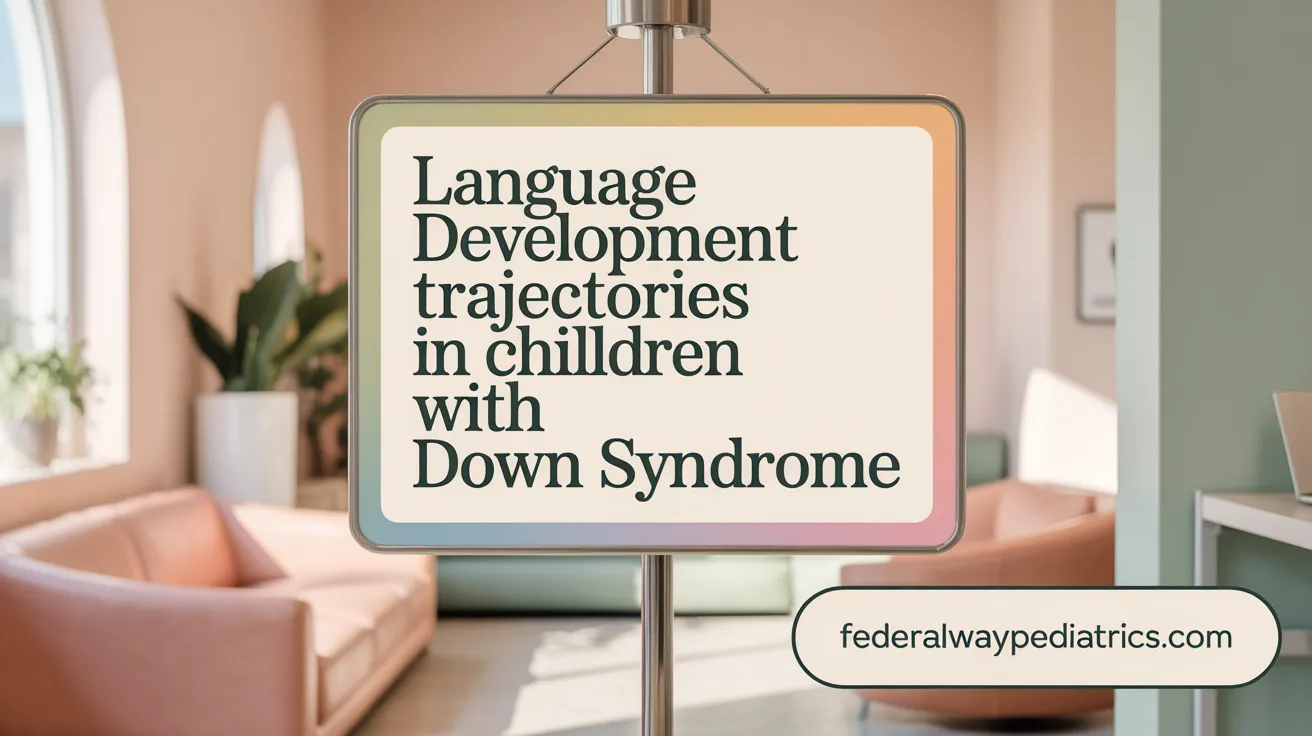
Emerging language skills before age 3
Children with Down syndrome typically begin to develop expressive language skills during early childhood, but this process is often delayed compared to typically developing children. Before reaching age 3, only about 10% of these children use more than 50 words, signs, or phrases. Most are still acquiring foundational communication abilities, and few use communication devices at this early stage. This period is crucial for early intervention, including speech therapy, to support language growth.
Milestones at ages 5 to 7
By the time children with Down syndrome reach age five, substantial progress can be observed. About 44% of children in this age group use more than 50 words, signs, or phrases, and most communicate using spoken language. Some children also use sign language to supplement their communication. Though many have achieved significant milestones, delays persist compared to typically developing peers, especially in expressive language and academic skills.
Language use in later childhood and adolescence
In the age range of 7 to 10 years, most children with Down syndrome use three- to four-word sentences. Approximately 83% rely on spoken language as their primary mode of communication. Despite verbal progress, there are still notable delays in academic skills such as basic addition and subtraction, with only around 11% to 17% demonstrating these skills by age ten. In adolescence, particularly between 14 and 18 years, many individuals use spoken language fluently and develop early literacy and math skills. However, some continue to experience delays in academic areas.
Use of communication devices and sign language
While some children with Down syndrome utilize sign language, especially in early childhood, its use often diminishes as oral language skills improve. Few children use communication devices at a young age, but these can be valuable tools to support communication, particularly for those with more significant delays. Overall, language development remains a gradual process, with tailored interventions playing a vital role in enhancing expressive language abilities.
| Age Range | Language Milestones | Percentage Using >50 Words | Communication Methods | Typical Delays |
|---|---|---|---|---|
| Before age 3 | Emerging language skills | ~10% | Mostly gestural, limited speech | Delays in expressive language |
| 5–7 years | Most communicate spoken language | 44% | Spoken language, some sign language | Still delayed compared to peers |
| 7–10 years | Use 3–4 word sentences | 83% | Spoken language dominant | Academic delays in math and reading |
| 14–18 years | Fluent spoken language, early literacy | N/A | Spoken language | Possible persistent delays |
Understanding these developmental trajectories helps caregivers and professionals support children with Down syndrome effectively, emphasizing early intervention and tailored communication strategies.
Academic Skill Delays and Educational Trends in Down Syndrome

Delays in early literacy and math skills
Children with Down syndrome often experience delays in academic skills, especially in early literacy and basic mathematics. Most children start with limited vocabulary and reading ability, which impacts their overall learning progress.
By age five, approximately 44% of children use more than 50 words, signs, or phrases, and most communicate verbally, though some still rely on sign language. However, basic academic skills such as addition and subtraction are delayed, with only about 11-17% of children mastering these concepts by age ten.
Progress in these areas continues into adolescence, but delays often persist. While many individuals aged 14–18 years have established early literacy and math skills, some still face difficulties keeping pace with peers academically.
Use of spoken language and sentences by age group
Spoken language development shows gradual improvement. Before age three, expressive language skills are emerging, with only around 10% of children using more than 50 words, signs, or phrases. Few children this young use communication devices.
Between ages five and seven, children generally use more words and begin forming simple sentences. By age five, nearly half of children can use more than 50 words or signs, and spoken language becomes the predominant mode of communication.
As children grow older, most aged 7–10 years speak in 3–4 word sentences, with approximately 83% relying mainly on spoken language. Many also use sign language to support communication.
Educational placement trends from preschool to adolescence
Educational settings for children with Down syndrome tend to shift with age. In preschool, there is a high rate of inclusion in regular classrooms, supported by various educational services.
However, during adolescence, there is a trend toward more separate classrooms. Many students continue to receive additional support outside of traditional school settings, including speech and behavioral therapies.
Despite the shift, many barriers remain, such as waitlists and limited availability of specialized providers, which can hinder access to necessary educational services.
Barriers to accessing educational supports
Accessing comprehensive educational and developmental supports remains a challenge. Many families face barriers like long waitlists for therapies, shortage of trained providers, and insufficient information on how to navigate available services.
These obstacles especially impact older children and adolescents, potentially delaying critical interventions that could improve learning and social outcomes.
| Age Group | Typical Communication Skills | Academic Skills | Educational Placement Trends | Barriers to Services |
|---|---|---|---|---|
| 0–3 years | Emerging expressive language, few signs or devices | Limited | Early intervention with therapies | Waitlists, lack of information |
| 4–7 years | Use of >50 words, phrases, simple sentences | Basic literacy and math emerging | Inclusion in regular classrooms, increasing support | Provider shortages, access issues |
| 8–10 years | 3–4 word sentences, spoken language dominant | Partial mastery of basic math, reading | Mixed inclusion and separate settings | Continued barriers to therapy access |
| 14–18 years | Established literacy and math skills | Academic delays persist, some delays | Transition to more independent or specialized education | Persistent access barriers and resource limitations |
Understanding these developmental and educational trends is crucial for supporting children with Down syndrome at every stage, ensuring they receive personalized and effective educational interventions.
Common Behavioral Concerns and Their Age Progression
Repetitive behaviors and transition difficulties
Children with Down syndrome often exhibit repetitive behaviors, such as hand-flapping, rocking, or repetitive speech. These behaviors can serve as coping mechanisms or forms of self-stimulation. Transitioning from one activity or environment to another can also be challenging for them, leading to frustration or meltdowns.
Behavior issues prevalence by age
Behavioral concerns tend to increase as children grow older. Nearly half of children aged 3 to 5 years display repetitive behaviors or transition issues. In older age groups, these behaviors may persist or become more pronounced, affecting social interactions and daily routines.
Lower therapy service rates in older children
While younger children with Down syndrome often receive numerous therapies such as speech, occupational, and physical therapy, fewer older children have access to these services. Barriers like waitlists, provider shortages, and lack of information often lead to reduced therapy utilization among adolescents.
Strategies for behavioral support
Supporting children with Down syndrome involves tailored strategies including consistent routines, visual aids, and social skills training. Early behavioral interventions can help manage repetitive behaviors and transition difficulties. Schools and caregivers can collaborate to provide positive reinforcement and structured environments that promote independence and social development.
| Age Group | Common Behaviors | Service Access | Support Strategies |
|---|---|---|---|
| 3-5 years | Repetitive behaviors, transition issues | High | Visual schedules, routine consistency |
| 6-10 years | Increased behavioral challenges, academic delays | Moderate | Social skills training, behavioral therapy |
| 11-18 years | Persistence of behaviors, independence concerns | Low | Counseling, peer support, tailored behavioral plans |
Health Risks and Medical Challenges in Down Syndrome
What are the common health issues faced by individuals with Down syndrome?
Children and adults with Down syndrome often face various medical challenges that require ongoing attention. One of the most significant concerns is the high prevalence of congenital heart defects. About half of children born with Down syndrome are affected by heart conditions such as atrioventricular septal defects, patent ductus arteriosus, and tetralogy of Fallot. These heart issues often necessitate surgical intervention or medical management to improve health and development.
In addition to heart problems, individuals with Down syndrome are at increased risk for hearing loss, vision problems, and sleep apnea. Hearing difficulties may result from frequent ear infections or structural issues, and vision problems like strabismus or refractive errors are common. Sleep apnea, often caused by obstructive issues in the airway, can significantly affect overall health and quality of life.
What interventions and therapies are available to manage these medical challenges?
Effective management involves a multidisciplinary approach, including medical interventions and therapies tailored to individual needs. Surgical procedures, such as heart defect repairs, are often required early in life. Regular screening and check-ups can help detect issues like hearing and vision impairments early.
Developmental therapies play a vital role—the most common include speech, occupational, and physical therapy. These therapies help improve communication, motor skills, and daily functioning. Medications may also be prescribed to manage specific medical conditions like sleep apnea or ear infections.
How is health surveillance and management conducted for individuals with Down syndrome?
Comprehensive health surveillance is crucial, extending from infancy through adulthood. Routine screenings include echocardiograms for heart health, audiological evaluations, vision assessments, and monitoring for signs of sleep apnea.
Preventive care, such as vaccinations and health education, supports overall well-being. Lifelong management involves collaboration between healthcare providers, families, and support services to address evolving medical and developmental needs. Advanced medical care has contributed to increased life expectancy, now reaching around 60 years or more, emphasizing the importance of continuous health monitoring.
| Medical Issue | Common Conditions | Typical Interventions | Notes |
|---|---|---|---|
| Congenital Heart Defects | Atrioventricular septal defect, PDA, TOF | Surgical repair, medical management | About 50% of children affected |
| Hearing Loss | Chronic ear infections, sensorineural loss | Hearing aids, surgical procedures, regular screenings | Early detection enhances language development |
| Vision Problems | Strabismus, refractive errors | Glasses, patching, surgical correction | Regular eye exams are recommended |
| Sleep Disorders | Obstructive sleep apnea | CPAP therapy, surgical intervention | Significant impact on overall health |
Understanding these challenges and implementing early, consistent medical care can greatly improve health outcomes for individuals with Down syndrome.
Early Intervention Services Utilized by Children with Down Syndrome
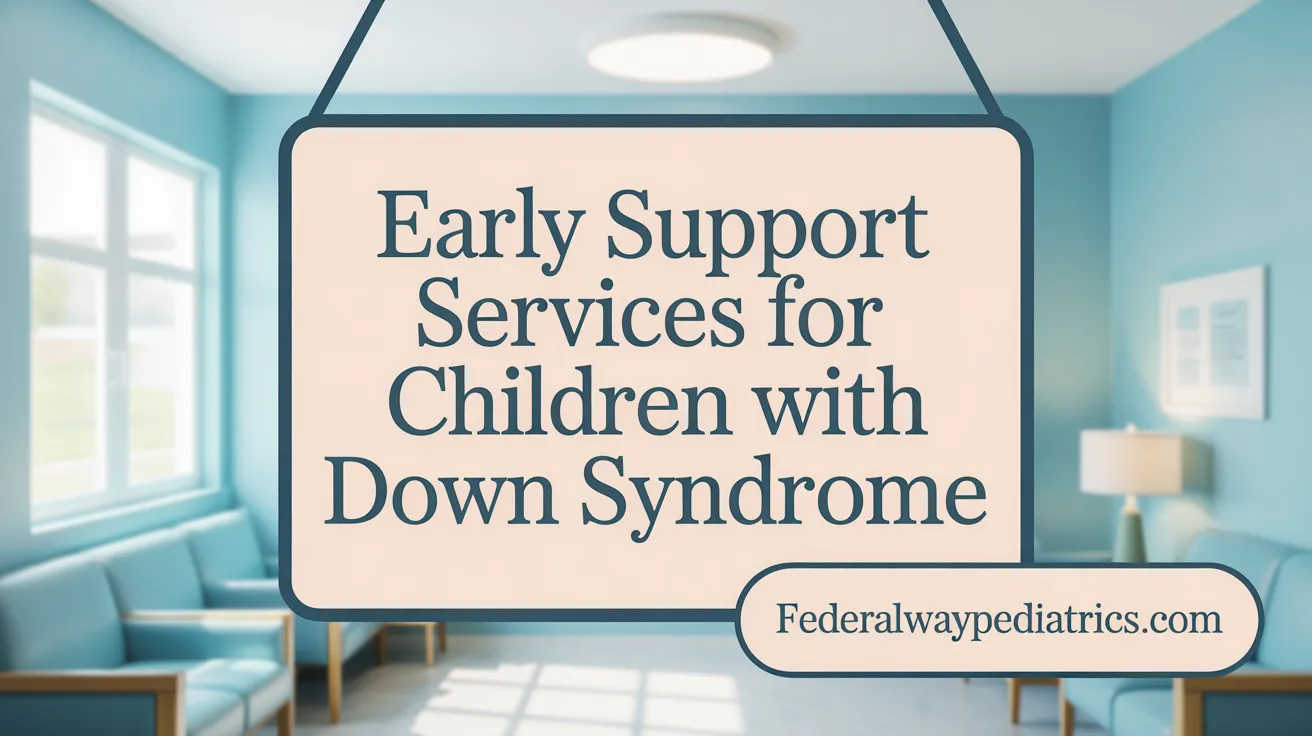
What is the prevalence of Early Intervention (EI) service use among children with Down syndrome?
Most children diagnosed with Down syndrome begin receiving Early Intervention services early in life. These programs are widely utilized to support development during critical early years. Overall, a significant number of these children access specialized services to help address their developmental delays.
What types of therapies do children with Down syndrome commonly receive?
Children with Down syndrome typically participate in a variety of therapeutic programs. The most common include speech therapy, occupational therapy, and physical therapy. These therapies target specific areas such as communication skills, motor development, and daily living activities. Early and consistent participation in these therapies can lead to notable improvements.
How does early intervention impact developmental progress?
Early intervention plays a crucial role in enhancing developmental outcomes for children with Down syndrome. Programs focusing on speech, motor skills, and cognitive development can significantly reduce delays. For example, children who engage in targeted speech therapy often develop stronger communication skills, aiding their ability to interact and learn.
What barriers exist to accessing these services?
Despite the clear benefits, many children face obstacles in receiving timely intervention. Common barriers include lengthy waitlists for services, insufficient provider availability, and limited information about how to access care. Older children often experience decreased service availability, despite potentially having greater needs.
What are effective intervention strategies and support options?
Most children with Down syndrome receive Early Intervention services, which include individualized speech, occupational, and physical therapy plans starting shortly after birth. These strategies are tailored to each child's needs and aim to promote optimal development.
Family involvement is vital, with engagement in therapy sessions and at-home activities boosting progress. Personalized plans ensure therapies address specific challenges faced by each child.
However, barriers such as waitlists and inadequate provider resources remain challenges, especially for older children. Increasing awareness, expanding provider training, and streamlining access processes are essential to improve support systems.
| Aspect | Details | Additional Information |
|---|---|---|
| Service Types | Speech, occupational, physical therapies | Focus on communication, motor, and daily skills |
| Timing | Usually initiated early in life | Critical for maximizing developmental gains |
| Barriers | Waitlists, provider shortages | More significant in older children |
| Support Strategies | Family involvement, tailored plans | Enhance therapy outcomes |
| Outcomes | Improved communication, motor skills | Reduced delays and increased independence |
In conclusion, early intervention services are vital for children with Down syndrome. Combining professional therapies with active family participation and efforts to remove access barriers can significantly support their development and quality of life.
Impact of Early Intervention Techniques on Developmental Outcomes

How do early intervention techniques impact the development of children with Down Syndrome?
Early intervention plays a crucial role in shaping the developmental trajectory of children with Down syndrome. Initiating therapy early in life, often within the first few months, helps improve motor skills, language, communication, and cognitive abilities. These therapies capitalize on the brain's neuroplasticity, enabling the young brain to adapt and develop new pathways.
Research shows that infants who begin speech, occupational, and physical therapies early tend to show more significant gains. For example, improved language skills at younger ages often lead to better academic and social outcomes later. Moreover, early intervention supports emotional regulation and social skills, which are essential for overall well-being.
Family participation is vital in this process. When caregivers are engaged and equipped with strategies to support their child's development, the progress is amplified. Family-centered approaches ensure that interventions are tailored to the child's specific needs and everyday environment, making therapy more relevant and effective.
In the short term, children receiving early intervention often demonstrate accelerated development in key areas such as communication and motor skills. Over the long term, these early gains tend to translate into better participation in inclusive education settings and social activities, enhancing quality of life.
In summary, early intervention is a powerful tool that harnesses the brain's capacity to adapt, offering children with Down syndrome a stronger foundation for future learning and development.
Theoretical Frameworks Guiding Developmental Support
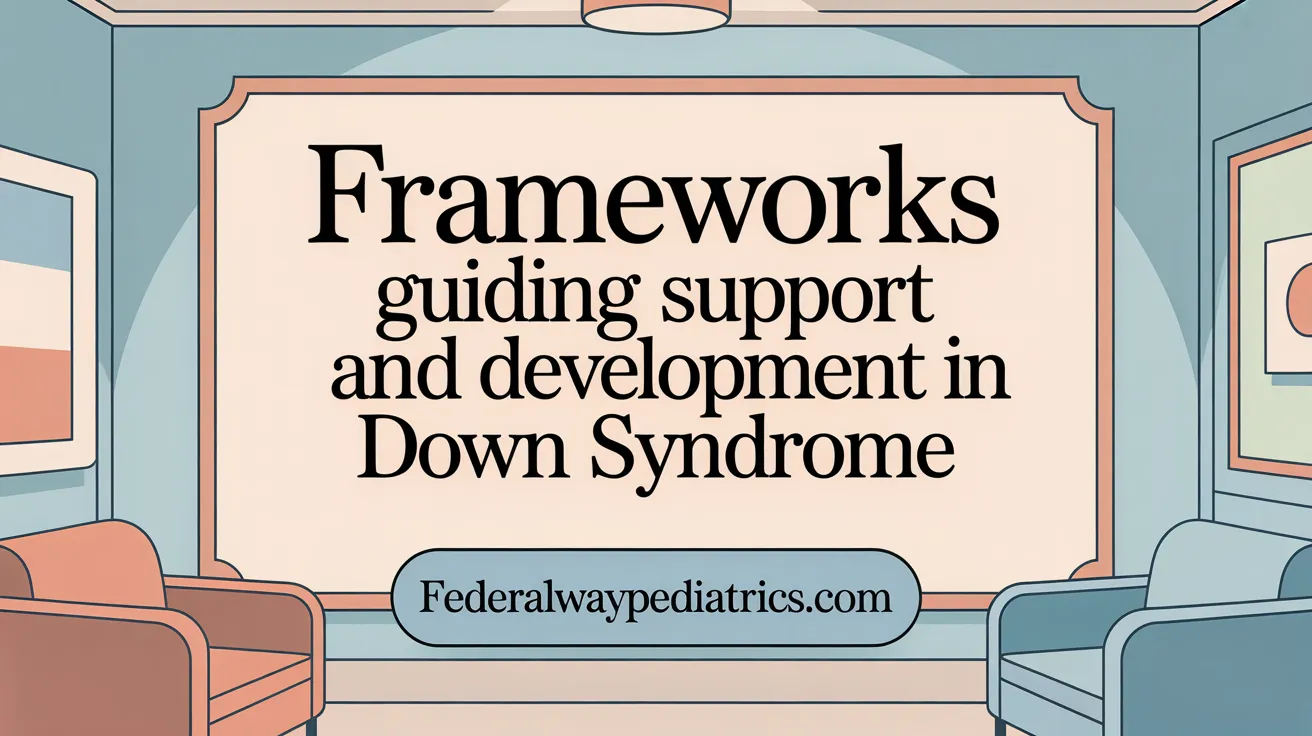
What theoretical and practical frameworks guide developmental support for individuals with Down Syndrome?
Supporting children and adolescents with Down syndrome requires a comprehensive understanding of various developmental frameworks. These models help professionals and families create effective, tailored interventions to promote growth across cognitive, social, and physical domains.
One influential approach is Bronfenbrenner's ecological model, which emphasizes the importance of environmental influences on development. This model considers the multiple layers of a child's context, including the microsystem (family, school), mesosystem (interactions between microsystems), exosystem (broader community and services), macrosystem (cultural values, laws), and chronosystem (changes over time). Recognizing the impact of these interconnected layers enables targeted support that accounts for environmental and societal factors affecting children with Down syndrome.
Family-centered care is another key principle that underscores the importance of active family involvement. This approach advocates for collaboration between healthcare providers, educators, and families to tailor interventions closely aligned with the child's and family's needs and values. It emphasizes empowering families, respecting their insights, and fostering their active participation in decision-making processes.
Applying Self-Determination Theory (SDT) offers insights into motivating and supporting children’s development by focusing on autonomy, competence, and relatedness. This framework encourages fostering environments where children with Down syndrome can experience choice, develop skills, and build meaningful relationships. Such empowerment promotes well-being and social inclusion, essential components of holistic development.
Furthermore, feminist perspectives on caregiving highlight the importance of sensitive, culturally informed approaches. These viewpoints address caregiving dynamics, emphasizing empathy, respect, and the recognition of diverse cultural practices. Ensuring that interventions are culturally sensitive helps in building trust and fostering effective support tailored to each individual’s background.
In summary, these frameworks—ecological models, family-centered care, Self-Determination Theory, and feminist perspectives—together guide a comprehensive, respectful, and individualized approach to developmental support.
| Frameworks | Focus Areas | Practical Implications |
|---|---|---|
| Ecological Models | Environment and societal factors | Holistic assessment, community engagement, policy development |
| Family-centered Care | Family involvement and needs | Collaborative planning, family education, support services |
| Self-Determination Theory | Autonomy and competence | Empowering children with choices, skill-building opportunities |
| Feminist Perspectives | Cultural sensitivity and respect | Culturally tailored interventions, caregiver support |
Understanding and integrating these approaches allow for more effective and compassionate developmental support for individuals with Down syndrome.
Research Advances and Clinical Discoveries in Down Syndrome

What does current research and clinical data reveal about Down Syndrome?
Recent studies in Down syndrome are shedding light on its complex biological and clinical landscape. Researchers have identified distinct molecular subtypes, which help tailor more effective, individualized treatments. These classifications allow clinicians to better understand the variability in developmental progress and medical issues among individuals.
Clinical trials are actively exploring new therapies, particularly targeting common co-occurring conditions such as Alzheimer’s disease and attention-deficit/hyperactivity disorder (ADHD). These trials aim to improve quality of life and extend lifespan by addressing cognitive decline and behavioral challenges.
The importance of multidisciplinary care is increasingly recognized. Integrating medical, developmental, behavioral, and educational services early on significantly enhances outcomes. Advanced developmental interventions, customized to each child's needs, are helping bridge delays in language, communication, and academic skills.
Emerging approaches in personalized medicine are making progress. These include genetic profiling to predict individual health risks and response to therapies. Efforts are underway to develop targeted treatments that address both the cognitive and medical aspects of Down syndrome.
Collectively, current research and clinical efforts are transforming the understanding of Down syndrome. They support a future where interventions are more precise, care is more comprehensive, and individuals with Down syndrome can achieve greater independence and well-being.
Below is a summary table highlighting ongoing research focuses:
| Aspect of Research | Current Focus | Clinical Impact | Additional Notes |
|---|---|---|---|
| Molecular Subtypes | Identifying distinct genetic patterns | Personalized treatments | Helps explain variability in outcomes |
| Co-occurring Conditions | Trials for Alzheimer's, ADHD | Better management options | Aims to delay or lessen symptoms |
| Multidisciplinary Care | Integrative service models | Improved developmental and health outcomes | Early intervention is critical |
| Personalized Medicine | Genetic and biomarker analysis | Tailored therapies | Enhances effectiveness and reduces side effects |
This evolving landscape demonstrates a promising shift toward more nuanced, effective support strategies for people with Down syndrome and their families.
Benefits of Early Diagnosis on Long-Term Outcomes
 Early detection of Down syndrome plays a crucial role in shaping positive developmental trajectories for affected children. When diagnosis occurs early, children can access vital therapeutic interventions such as speech, occupational, and physical therapies. These services help address developmental delays, especially in language, communication, and academic skills.
Early detection of Down syndrome plays a crucial role in shaping positive developmental trajectories for affected children. When diagnosis occurs early, children can access vital therapeutic interventions such as speech, occupational, and physical therapies. These services help address developmental delays, especially in language, communication, and academic skills.
One of the significant advantages of early diagnosis is the acceleration of developmental milestones. For instance, children who receive timely support often begin to use a larger vocabulary, signs, or phrases earlier than children who start interventions later. While many children with Down syndrome face delays, early intervention can help maximize their potential, enabling them to reach communication and social-emotional goals more closely aligned with typical developmental timelines.
Improved development fosters greater independence and self-esteem as children grow. When children learn essential skills early, they tend to be more confident in their communication abilities and social interactions, which contributes to a more positive self-image. Additionally, early interventions can reduce behavioral challenges, such as repetitive behaviors and transition difficulties, promoting better participation in school and community activities.
Educational advantages are also noticeable. Children who begin receiving support early tend to perform better academically, advancing in literacy and numeracy skills. For example, by age five, nearly half of children with Down syndrome communicate with over 50 words or signs, and many use spoken language. This foundation enables them to participate more actively in inclusive educational settings and increases their chances of success.
Overall, early diagnosis and intervention significantly improve long-term developmental and quality-of-life outcomes for individuals with Down syndrome. From better communication skills and academic performance to greater independence, the benefits of early support set the stage for a fulfilling and engaged life.
| Aspect | Impact | Supporting Data |
|---|---|---|
| Access to therapies | Enables timely developmental support | Most children receive speech, occupational, and physical therapy from early ages |
| Developmental milestones | Accelerates achievement | Children with early intervention show improved language and communication progress |
| Independence and self-esteem | Enhances confidence | Supported children tend to develop better social and emotional skills |
| Educational progress | Promotes academic success | Children who start support early are better equipped for primary education, with many communicating in spoken language by age five |
Support Services and Resources for Families
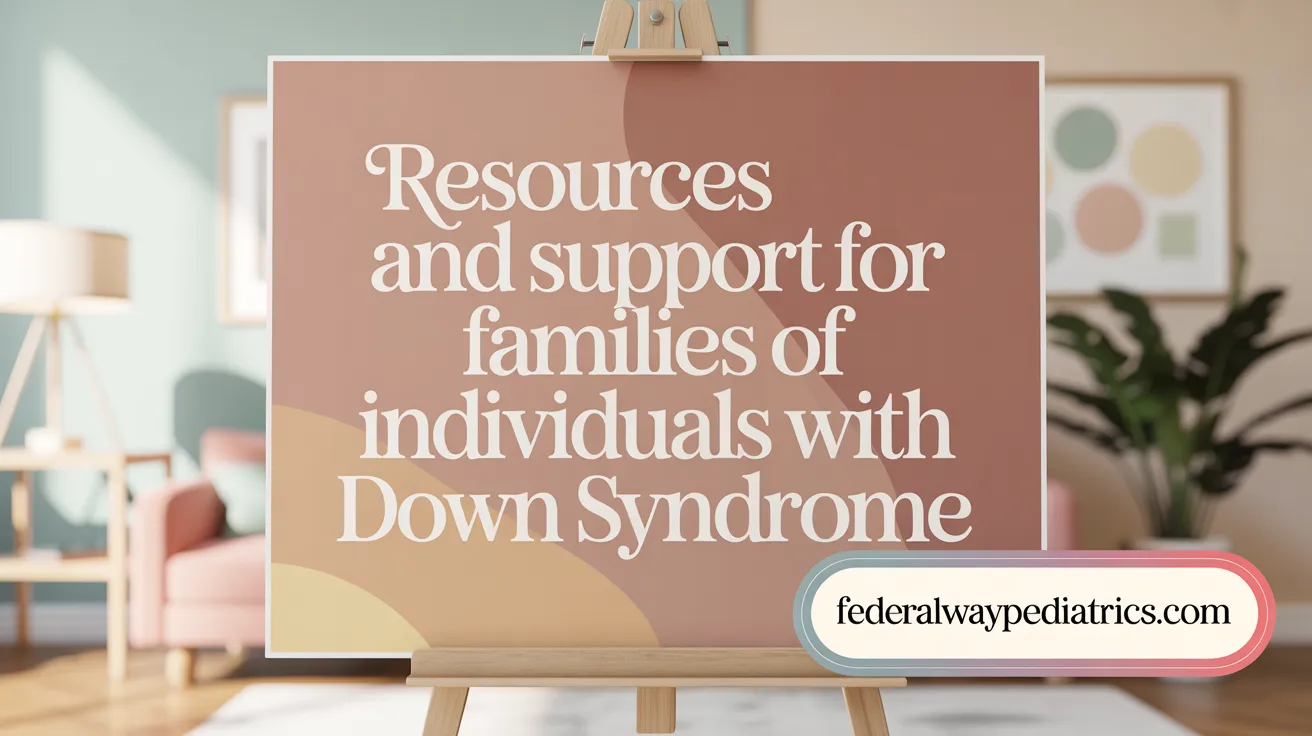
What support services and resources are available for families of individuals with Down Syndrome?
Families of children and adults with Down syndrome have access to a range of services designed to provide support, education, and medical care coordination. Prominent national organizations such as the National Down Syndrome Society (NDSS), Down Syndrome Affiliates in Action (DSAA), and the National Down Syndrome Congress (NDSC) serve as key resources. They offer advocacy programs, support groups, educational materials, and opportunities for community connection.
Local and regional organizations often align with these national groups to deliver tailored programs and events, helping families navigate community services and education pathways. Many of these organizations hold workshops and seminars on topics like developmental milestones, medical management, and transition planning.
Medical care coordination is facilitated through specialized clinics that focus on the unique health needs of individuals with Down syndrome. These clinics support families by providing comprehensive health assessments, monitoring common medical issues like congenital heart defects or sleep apnea, and linking them with specialists.
In addition to medical support, families benefit from educational resources that help improve understanding of Down syndrome and developmental expectations. These services also support long-term planning, including educational strategies, transition to adult care, and social integration programs.
Community and recreational supports play a vital role in promoting inclusion and development. Many organizations offer recreational activities, sports, arts programs, and social groups, fostering community participation and enhancing the quality of life for individuals with Down syndrome.
Overall, the combination of advocacy, medical, educational, and community services ensures that families are equipped with the resources necessary for their loved ones to thrive at every stage of life.
Educational Services and Legal Supports in Down Syndrome
What provisions are available under IDEA for children with Down syndrome?
The Individuals with Disabilities Education Act (IDEA) guarantees free and appropriate public education tailored to the individual needs of children with Down syndrome. This federal law mandates that educational programs include accommodations, modifications, and related services such as speech, occupational, and physical therapies. These services aim to address developmental delays, especially in communication and academic skills, fostering better learning outcomes.
How are inclusive education trends evolving for children with Down syndrome?
Historically, children with Down syndrome were often placed in separate, specialized classrooms. Today, there is a greater emphasis on inclusion, with many children participating in regular preschool and elementary classrooms with support. Evidence suggests that inclusive settings can promote social integration, enhance communication skills, and improve academic progress. Nonetheless, full inclusion depends on individual abilities and available resources.
What about transition planning for adolescents with Down syndrome?
As children grow older, transition planning becomes crucial. This process involves preparing students for post-secondary education, employment, and independent living. Schools collaborate with families and community agencies to develop individualized transition plans that include skill development in areas like self-advocacy, social skills, and vocational training.
What are the barriers and potential solutions in providing educational services?
Despite legal protections, many barriers remain. Common issues include long waitlists for services, shortages of specialized providers, and lack of awareness among parents about available resources. Solutions involve increasing funding for special education, training more providers, and expanding outreach programs to educate families about their rights and options.
| Aspect | Description | Challenges | Addressing Strategies |
|---|---|---|---|
| Provision | IDEA mandates support services for children with Down syndrome | Waiting lists, funding gaps | Policy advocacy, increased funding |
| Inclusion | Shift from segregated classrooms to inclusive settings | Lack of resources in regular schools | Teacher training, resource allocation |
| Transition | Planning for post-school life | Limited community programs | Early planning, partnerships with local organizations |
| Barriers | Access issues, lack of information | Resource scarcity, awareness gaps | Community outreach, policy reforms |
Improving Quality of Life Through Evidence-Based Approaches
What evidence-based approaches improve the quality of life for individuals with Down Syndrome?
Enhancing quality of life for people with Down syndrome involves a broad range of strategies rooted in scientific research and clinical best practices. Key among these are multidisciplinary health care, vocational and social inclusion, use of digital assistive technologies, and updated medical guidelines tailored to lifespan needs.
Multidisciplinary health care is fundamental. It typically includes regular medical checkups, management of common medical issues such as heart defects and sleep apnea, and developmental therapies. Early and ongoing interventions—such as speech, occupational, and physical therapies—are shown to significantly improve communication, motor skills, and everyday functioning.
Social and vocational inclusion are vital for fostering independence. Many children with Down syndrome participate in mainstream educational settings with support, leading to better social skills and self-esteem. As they grow into adulthood, vocational programs help develop work skills and promote community participation, which are linked to improved life satisfaction.
Digital assistive technologies are increasingly important tools. Communication devices, apps, and online platforms support language development, learning, and social interaction. They are especially helpful for those with expressive language delays and can be customized to individual needs.
Additionally, updated guidelines enhance the management of aging-related health concerns, such as early onset Alzheimer’s disease. Lifestyle recommendations, preventive care, and medical surveillance adapted to lifespan stages help maximize health outcomes and foster a person-centered approach.
Together, these evidence-based strategies create a comprehensive framework that advances health, education, and social integration, ultimately improving everyday living and long-term well-being for individuals with Down syndrome.
| Approach | Focus Area | Benefits | Implementation Examples |
|---|---|---|---|
| Multidisciplinary health care | Medical, developmental, and mental health support | Improved health management, developmental progress | Routine screenings, coordinated care teams |
| Vocational and social inclusion | Employment support, community activities | Increased independence, social skills | Supported employment programs, inclusive classrooms |
| Digital assistive technologies | Communication, learning, social engagement | Enhanced communication, tailored learning experiences | Speech devices, educational apps |
| Updated guidelines | Lifespan health management | Better disease prevention, aging support | Alzheimer’s screening, health maintenance protocols |
Understanding and implementing these comprehensive, evidence-based strategies are essential for improving the quality of life for individuals with Down syndrome across all stages of life. Continuous research and personalized care remain vital to meeting the evolving needs of this population.
Life Expectancy and Social Integration Trends

How has life expectancy changed over time?
The life expectancy for individuals with Down syndrome has seen remarkable improvement over the past few decades. In 1973, the average lifespan was about 30 years. Today, many individuals with Down syndrome live well into their 60s, with some reaching their 70s and even 80s. This significant increase is largely due to advancements in medical care, early diagnosis, and better management of associated health conditions.
What factors have contributed to the increased lifespan?
Enhanced medical treatments play a crucial role in extending life. Surgical interventions for congenital heart defects, management of sleep apnea, and regular screening for age-related conditions like Alzheimer’s disease have all contributed. Improved nutrition, access to comprehensive healthcare, and early developmental support also help individuals reach longer, healthier lives.
How are people with Down syndrome participating socially and gaining independence?
Inclusion in community and educational settings has grown considerably. Many children with Down syndrome now attend mainstream schools and participate in extracurricular activities. As they grow older, an increasing number are living independently or with minimal support.
What about employment and living arrangements?
People with Down syndrome are increasingly engaged in workplaces through supported employment programs. They are participating in volunteer work, internships, and full-time jobs suited to their abilities. Many live in supported housing arrangements, with some enjoying greater independence and autonomy, thanks to community-based living solutions. Overall, societal acceptance and tailored support services have played vital roles in helping individuals with Down syndrome lead engaged, meaningful lives.
| Aspect | Trends | Contributing Factors |
|---|---|---|
| Life Expectancy | 30 years (1973) to 60+ years today | Medical advances, early intervention |
| Community Participation | Increasing inclusion from childhood to adulthood | Educational policies, social programs |
| Independence & Living | More individuals in independent or supported living | Support services, employment programs |
| Employment Opportunities | Growing supported employment and volunteering | Societal acceptance, employment initiatives |
Barriers to Care and Interventions Across the Lifespan

Service Gaps Especially for Older Children
Children with Down syndrome often face significant obstacles in accessing appropriate developmental and behavioral services as they grow older. While many infants and preschoolers receive early intervention services, including speech, occupational, and physical therapy, this trend tends to decline in adolescence. Older children and teenagers tend to experience more complex impairments, yet they are less likely to receive continuous support in areas like speech therapy and behavioral interventions. This gap can impact their ability to develop independence and academic skills over time.
Waitlists and Provider Availability
One of the major challenges in delivering comprehensive care is the long waitlists and insufficient availability of qualified providers. Many families report delays in securing services due to high demand and limited specialized practitioners in certain regions. This issue is particularly pronounced for therapies tailored to older children and adolescents, where demand often exceeds supply. As a result, children may miss critical windows for intervention, which can influence their developmental trajectories.
Information and Access Challenges
Access to services is also hampered by a lack of information and awareness among parents and caregivers. Many families do not know how to navigate the healthcare and educational systems to access needed support. Barriers such as complex application procedures, limited outreach, and inadequate dissemination of resources compound the problem. Consequently, some children are not enrolled in essential therapies or educational programs, further widening developmental disparities.
Impact on Functional Outcomes
These service gaps substantially affect the functional outcomes of individuals with Down syndrome. Without ongoing therapeutic support, delays in speech and language development, academic skills like basic addition and subtraction, and social-emotional growth can persist or worsen. Over time, this can limit opportunities for full community participation, employment, and independent living in adulthood. Addressing these barriers requires coordinated efforts between healthcare providers, educators, and policymakers to ensure continuous and equitable access to intervention services throughout the lifespan.
Role of Family and Caregiver Involvement in Developmental Support
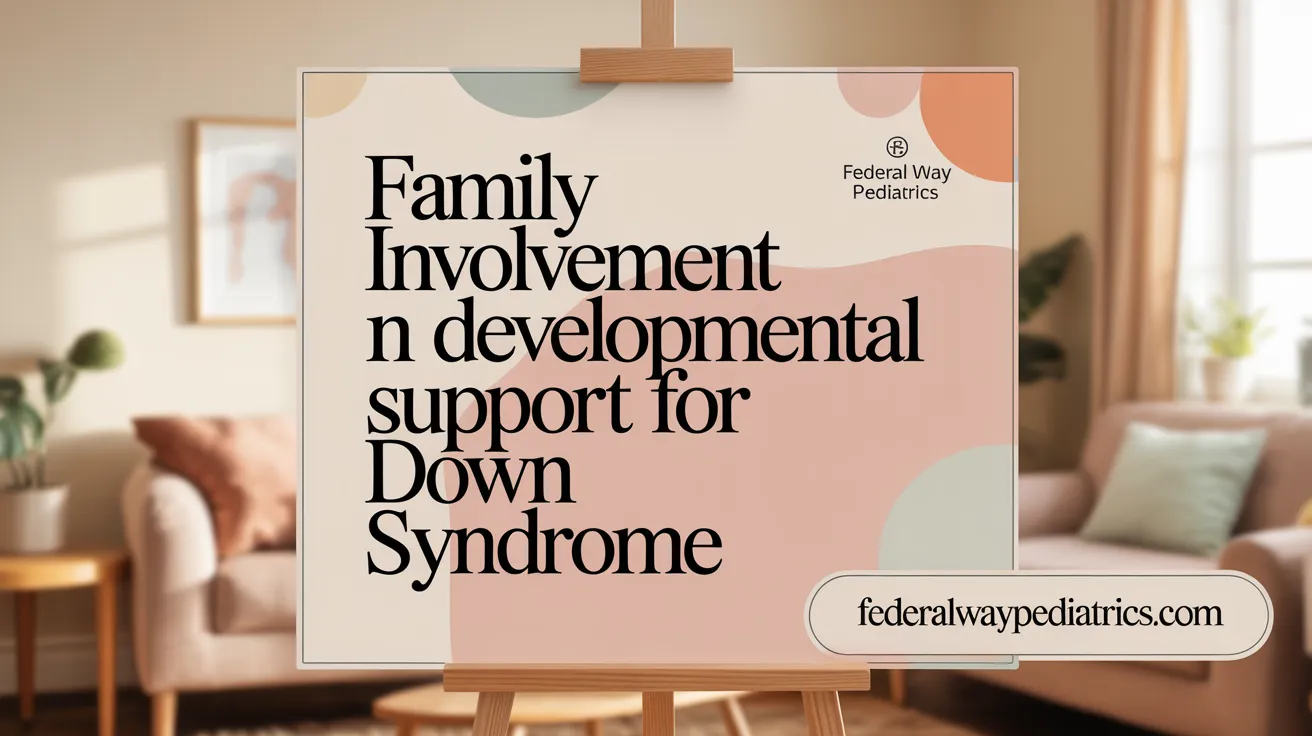
What are the benefits of family-centered care?
Family-centered care plays a crucial role in supporting children with Down syndrome. When families are actively involved, they better understand their child's specific needs and can advocate effectively for appropriate services. This approach fosters emotional security, enhances communication, and promotes consistent developmental support at home.
How can responsive parenting techniques aid development?
Responsive parenting involves recognizing and responding promptly to a child's cues, which is especially beneficial for children with Down syndrome. Techniques such as eye contact, encouraging attempts at communication, and positive reinforcement help boost language skills and emotional well-being. This consistency supports emerging expressive skills and builds trust.
What are effective behavioral management strategies?
Children with Down syndrome may display behaviors such as repetitive actions or resistance to transitions. Behavioral management strategies like clear routines, visual schedules, and positive behavior support can reduce frustration and improve cooperation. Caregivers trained in these strategies can help mitigate behavioral challenges, making daily routines smoother and less stressful.
Why is emotional and social support important?
Providing emotional and social support helps children with Down syndrome develop confidence and social skills. Family involvement offers a stable environment where children learn appropriate social interactions, self-regulation, and emotional resilience. Additionally, networks of support for caregivers enable them to manage stress and sustain long-term developmental support.
| Aspect | Benefits | Practical Tips |
|---|---|---|
| Family-centered care | Improved advocacy, emotional security | Regular communication with healthcare providers, attending support groups |
| Responsive parenting | Language growth, emotional bonds | Respond to cues, maintain eye contact, use simple language |
| Behavioral strategies | Reduced disruptions, improved routines | Use visual supports, establish clear routines, reward good behavior |
| Emotional support | Confidence, social skills | Encourage social opportunities, celebrate achievements |
Family and caregiver involvement significantly impacts the developmental progress of children with Down syndrome. By adapting responsive, supportive, and consistent strategies, caregivers can foster a nurturing environment that promotes growth across cognitive, emotional, and social domains.
Educational and Behavioral Therapy Needs in Adolescents

Why does therapy participation tend to decrease with age in children with Down syndrome?
Many children with Down syndrome receive extensive early intervention services, including speech, occupational, and physical therapy. These services significantly support their development in communication, motor skills, and daily functioning. However, as children grow older, there is a noticeable decline in participation, especially in older age groups. This decline can be attributed to multiple factors, including limited availability of specialized providers, longer waitlists, and a lack of comprehensive transition planning from pediatric to adult services.
What is happening with behavioral therapy and speech services among older children?
Older children with Down syndrome often demonstrate increased impairments compared to their younger counterparts, yet they tend to receive fewer behavioral and speech therapies. Many of these children continue to face challenges like language delays, behavioral issues such as repetitive behaviors, and transitions difficulties. Despite the ongoing needs, access to these therapies diminishes, possibly due to systemic barriers, limited adult service frameworks, or insufficient awareness among families about available options.
How can we adapt support systems to meet adolescent needs?
Addressing the evolving needs of adolescents requires tailored strategies. Schools and health services should promote seamless service transitions, ensuring continuity of therapies like speech and behavioral intervention well into adolescence and adulthood. Incorporating peer support programs, social skills groups, and vocational training can also foster independence and improve quality of life. Additionally, increasing awareness among families about resources and advocating for policy changes to expand service availability are crucial steps.
What can be done to bridge the gap in services?
To bridge the service gap, stakeholders should bolster training for providers to address the unique needs of adolescents with Down syndrome. Expanding funding for adult services, strengthening partnerships between educational and healthcare systems, and streamlining referral pathways can facilitate better access. Furthermore, providing family education on transitioning to adult care options ensures that support continues seamlessly as children age.
Summary Table of Therapy and Support Trends in Down Syndrome Adolescents:
| Age Group | Therapy Participation | Common Challenges | Service Barriers | Recommended Strategies |
|---|---|---|---|---|
| 3-5 years | High | Language delays, behavioral issues | Waitlists, limited info | Early intervention, parent training |
| 7-10 years | Moderate | Academic skill delays, social skills | Provider shortages | School-based services, peer groups |
| 14-18 years | Lower | Academic progress, independence | Access to adult services | Transition programs, community support |
Efforts to understand and adapt to the developmental trajectory of children with Down syndrome are crucial in ensuring sustained support throughout adolescence and beyond.
Assistive and Communication Technologies for Down Syndrome

Use and availability of assistive technologies in early childhood
Children with Down syndrome often face delays in communication and language development. To support their growth, a range of assistive technologies are available and increasingly accessible from early childhood.
These tools include simple communication aids like picture exchange communication systems (PECS), which help children express themselves through visual symbols. As children grow, more advanced devices, such as speech-generating devices (SGDs), can be introduced to facilitate spoken communication.
The availability of these technologies varies depending on geographic location, local resources, and healthcare support systems. Early intervention programs frequently incorporate the use of such tools to enhance developmental outcomes.
Speech devices and sign language
Speech devices can range from basic single-word communicators to sophisticated devices that produce full sentences. Many children with Down syndrome who experience expressive language delays benefit from using these devices, encouraging independence and social interaction.
Sign language remains a vital form of communication, especially before children develop spoken language skills. Many children with Down syndrome learn sign language alongside spoken words or phrases, providing a bridge to more functional communication.
Most communication devices are designed to be user-friendly, with customizable features tailored to individual needs. Few children at very young ages use these devices, but early exposure can promote more effective communication as they mature.
Technology supporting learning and social interaction
Technological aids extend beyond communication, supporting learning and social engagement. Interactive educational software, tablets, and apps facilitate literacy, numeracy, and social skills.
Social media platforms and online groups provide community and peer support, contributing to social inclusion and confidence.
Specialized tools help children with Down syndrome participate in classroom activities, homework, and social games, fostering a more inclusive educational environment.
Future directions
Advances in technology promise even greater support for individuals with Down syndrome. Emerging trends include AI-powered communication devices that adapt to user preferences and needs, virtual reality environments for social skills training, and wearable devices that monitor health and developmental progress.
Research continues into developing more accessible, affordable, and tailored technologies. As these innovations emerge, they will help improve communication, learning, and quality of life for individuals with Down syndrome across all age groups.
| Technology Type | Current Use | Future Potential | Additional Features |
|---|---|---|---|
| Speech-generating devices | Used mainly by school-age children | More intuitive and portable devices | AI integration, customization options |
| Sign language apps | Used in early childhood | Real-time translation and teaching tools | Multilingual capabilities |
| Educational software | Supports literacy and numeracy | Adaptive learning platforms | Personalized content delivery |
| Wearable health monitors | Tracks health metrics | Continuous developmental tracking | Data sharing with caregivers |
This ongoing development and wider integration of assistive technologies are essential for supporting the communication, education, and social participation of children and adults with Down syndrome.
Community and Vocational Engagement for Adults with Down Syndrome

How are adults with Down syndrome increasing their independence and involvement in the community?
Many adults with Down syndrome are now living more independently or in supported environments, thanks to improved medical care, education, and social programs. This shift allows for greater participation in daily activities and community life, fostering a sense of belonging and purpose.
What are options for work and volunteer participation?
Adults with Down syndrome are increasingly taking part in paid employment and volunteer work. Many participate in settings such as retail, hospitality, and office jobs. Volunteering opportunities also help build skills and social connections, contributing to their overall well-being.
What are the benefits of social inclusion?
Engagement in community activities enhances social skills, reduces feelings of isolation, and improves overall mental health. Inclusion helps adults with Down syndrome develop friendships, gain confidence, and experience a more fulfilling life.
What supports help facilitate adult participation?
Support services like job coaching, social skills training, and accessible transportation are vital. Community programs and organizations also provide tailored opportunities, including day programs, supported employment, and social clubs.
| Aspect | Details | Additional Notes |
|---|---|---|
| Living arrangements | Increased numbers in independent or semi-supported homes | Better quality of life and autonomy |
| Employment types | Supported, competitive, and sheltered work | Integration varies based on individual needs |
| Volunteer activities | Community projects, charities, and local events | Enhances skills and social bonds |
| Support services | Job coaching, skill training, transportation | Critical for successful engagement |
| Social benefits | Improved mental health, friendships, community ties | Positive impact on overall quality of life |
Adults with Down syndrome are embracing opportunities for more community engagement through a combination of personal initiative and supportive services. This ongoing trend emphasizes their growing independence and the diverse contributions they can make in society.
Public Health and Policy Implications of Down Syndrome Data
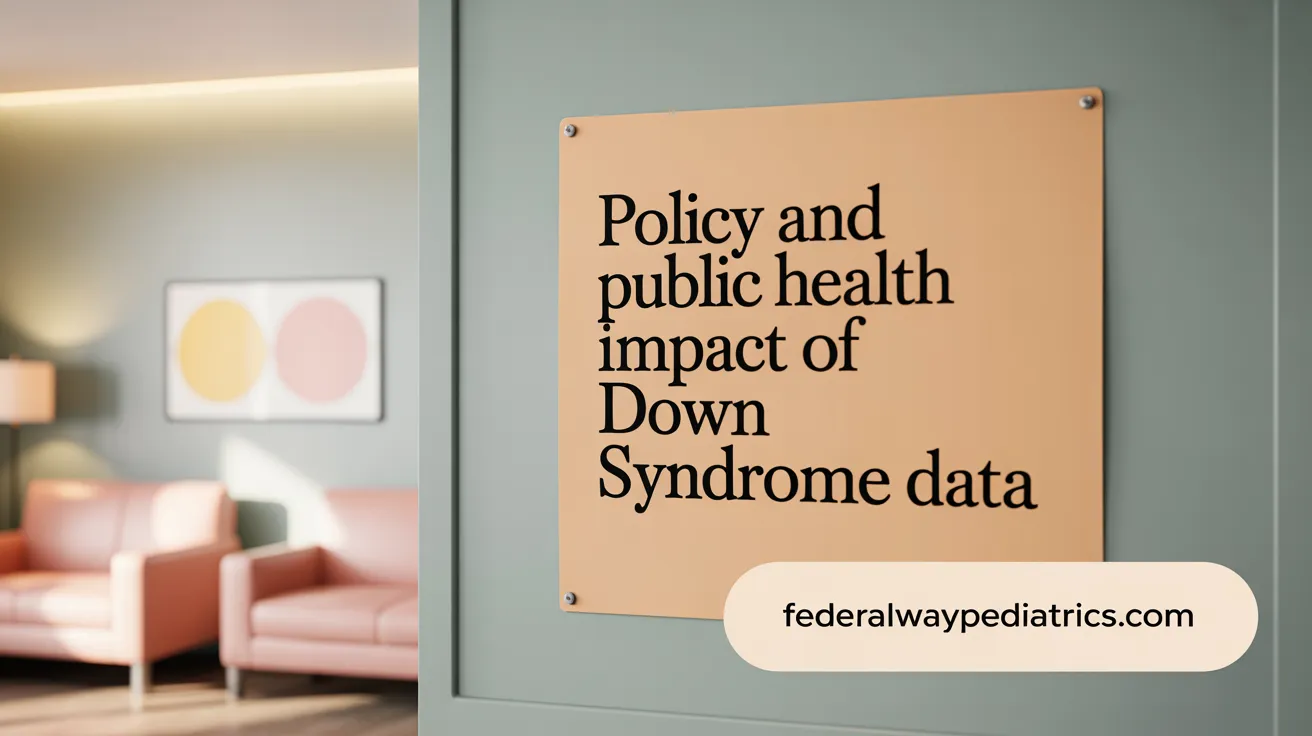
How is state health data used in understanding Down syndrome?
State health reports provide vital insights into the developmental, medical, and educational needs of children with Down syndrome. By analyzing data on diagnosis rates, developmental milestones, and service utilization, health agencies can identify gaps in care and target areas needing improvement.
For instance, the increased detection rate of nearly 99.7% through cfDNA screening reflects advancements in genetic testing, enabling earlier diagnosis and intervention. These data also highlight disparities, such as lower services for older children, which can inform resource allocation.
How can public health strategies be planned using these statistics?
Data on developmental delays, therapy access, and medical conditions shape strategic planning. Recognizing that many children have delays in language and academic skills underscores the importance of early intervention programs.
Public health initiatives can prioritize expanding services like speech and behavioral therapies, particularly for older children who are less likely to receive needed support. Awareness campaigns and training can also be based on prevalence and service access statistics.
What steps can improve access to services and care?
Gaps in service availability—such as waitlists and shortages of providers—must be addressed to support children’s development. Policymakers can use data showing low therapy utilization among older children to create targeted programs.
Implementing telehealth options and increasing funding for specialized staff can mitigate barriers. Moreover, national and state registries can ensure continuous monitoring of service access and outcomes.
What policies should be considered for education and healthcare?
Educational policies should promote inclusive classrooms and support services, considering the trend from preschool inclusion to separate classrooms during adolescence. Ensuring adequate funding for special education and training teachers is essential.
Healthcare policies need to facilitate comprehensive, lifelong care that includes regular screening for associated medical conditions, mental health support, and transition planning into adulthood. Laws that guarantee access to necessary therapies and medical interventions—regardless of age—are vital.
| Policy Area | Current Status | Recommendations | Data Source/Note |
|---|---|---|---|
| Early Intervention | Widely used | Expand services for older children | State health reports, therapy utilization data |
| Educational Inclusion | High in preschool, reduces in adolescence | Promote inclusive policies and support services | Education department records |
| Medical Care Access | Gaps in medical & behavioral therapies | Increase funding, telehealth services | Medical service utilization studies |
| Lifelong Support | Limited in current policies | Develop adult transition programs | National health policy reviews |
Ongoing data collection and analysis are critical for evolving policies that best meet the needs of individuals with Down syndrome and their families.
Towards Optimized Outcomes for Individuals with Down Syndrome
Comprehensive data on diagnosis rates and developmental trajectories of Down syndrome underscore the importance of early diagnosis and targeted interventions. Integrating genetic insights with personalized care and family-centered support enables better developmental and social outcomes. Addressing service gaps and leveraging evidence-based approaches enhances quality of life across the lifespan. As research progresses and policies evolve, a multidisciplinary, inclusive framework remains essential to empower individuals with Down syndrome and their families to thrive in increasingly supportive environments.
References
- Development, education, and services in children with ...
- Health Supervision for Children and Adolescents With ...
- Down SYNDROME Assessment and Intervention for Y
- Down Syndrome
- Facts and FAQ About Down Syndrome
- Early Intervention - National Down Syndrome Society
- What are common treatments for Down syndrome?
- Why Is Early Intervention Crucial for Children with Down ...
- Early Intervention for Children With Down Syndrome
